
Timing can make or break your email marketing campaigns. You could craft the perfect subject line, design stunning visuals, and write compelling copy—but if your email lands in someone’s inbox at the wrong moment, it might never get opened.
The question isn’t just about finding the “perfect” time to send emails. It’s about understanding your audience’s behavior, testing different approaches, and optimizing based on real data. This guide will walk you through the research on email timing, industry benchmarks, and practical strategies to boost your open rates and engagement.
The Science Behind Email Timing

Email timing matters because it directly affects visibility and engagement. When you send an email at the right moment, you’re more likely to catch recipients when they’re actively checking their inbox and have time to engage with your content.
Research shows that email open rates can vary by as much as 20% depending on when you send them. But these numbers don’t tell the whole story. Your audience’s behavior, industry, and email type all play crucial roles in determining the best send times.
Why Timing Affects Performance
Several factors influence how timing impacts your email marketing results:
Inbox competition: During peak hours, your email competes with dozens of others for attention. Sending at less crowded times can help your message stand out.
Recipient availability: People check their email at different times throughout the day. Some are early morning checkers, others prefer evening browsing sessions.
Device usage patterns: Mobile opens peak during commute times and lunch breaks, while desktop opens are higher during traditional work hours.
Content relevance: A promotional email about weekend activities will perform differently when sent on Tuesday versus Friday.
Industry Benchmarks and Research Findings
Multiple studies have analyzed billions of emails to identify optimal send times. While results vary, several patterns emerge consistently.
Best Days to Send Marketing Emails
Tuesday through Thursday consistently outperform other days across most industries. Tuesday often ranks as the top performer, with open rates typically 2-3% higher than weekend sends.
Monday can work well for B2B emails, as professionals catch up on communications after the weekend. However, avoid Monday mornings when inboxes are overflowing.
Friday’s performance depends heavily on your audience. B2B emails often decline on Fridays, while consumer-focused messages about weekend activities can perform well.
Weekends traditionally show lower open rates, but they’re becoming more viable as mobile email usage increases. Saturday morning sends sometimes outperform weekday sends for certain consumer brands.
Optimal Times of Day
Morning sends (8-10 AM) capitalize on the daily email check routine. Many people review their inbox shortly after arriving at work or starting their day.
Lunch hours (12-1 PM) can be effective for quick, engaging content that people can consume during breaks.
Early evening (5-7 PM) works well for consumer brands, as people wind down from work and browse personal emails.
Late evening (8-10 PM) can be surprisingly effective for certain audiences, particularly for entertainment, lifestyle, or educational content.
Factors That Influence Your Optimal Send Time
While benchmarks provide a starting point, your optimal send time depends on several specific factors.
Audience Demographics
Age groups show different email behavior patterns. Younger audiences often check email throughout the day on mobile devices, while older demographics may prefer traditional desktop checking during work hours.
Geographic location affects timing significantly. A global audience requires careful consideration of time zones, while local businesses can optimize for their specific region.
Professional status matters too. Executives might check email early in the morning or late at night, while shift workers have completely different schedules.
Industry Considerations
B2B companies typically see better results during business hours, Tuesday through Thursday. Decision-makers are more likely to engage with business-related content during work time.
Retail and e-commerce brands often perform well with evening and weekend sends, when people have time to browse and shop.
Healthcare and education sectors may need to consider professional schedules and avoid sending during peak patient care or class times.
Financial services might find Monday mornings effective for investment newsletters, as people plan their week ahead.
Email Type and Content
Promotional emails about sales and special offers often perform better when sent during shopping-friendly times—evenings and weekends.
Newsletter content can work well during commute times or lunch breaks when people have a few minutes to read.
Transactional emails should be sent immediately after the triggering action, regardless of time optimization.
Event invitations require strategic timing based on the event date and how much planning time recipients need.
Time Zone Considerations
Managing time zones becomes crucial as your email list grows beyond your local area. You have several approaches to handle this challenge.
Segmentation by Location
The most effective approach involves segmenting your list by geographic regions and sending emails at optimal times for each segment. This requires more planning but typically yields better results.
Rolling Sends
Some email platforms allow you to schedule “rolling” sends that automatically adjust for each recipient’s time zone. This ensures everyone receives your email at the same local time.
Single Send Time Strategy
For smaller lists or simpler campaigns, you might choose one send time that works reasonably well for your primary audience, accepting that some recipients will receive emails at suboptimal times.
Testing and Optimization Strategies
The only way to determine your optimal send time is through systematic testing. Here’s how to approach it effectively.
A/B Testing Send Times
Start with broad tests: Compare morning versus evening sends, or weekday versus weekend performance.
Narrow down gradually: Once you identify promising time ranges, test more specific hours within those ranges.
Test consistently: Run tests for at least 2-3 weeks to account for weekly variations and build statistical significance.
Keep other variables constant: When testing send times, don’t change subject lines, content, or audience segments simultaneously.
Analyzing Your Data
Look beyond open rates: While open rates indicate initial engagement, also examine click-through rates, conversion rates, and revenue per email.
Consider long-term engagement: Some send times might generate lower immediate opens but higher engagement over 24-48 hours.
Track unsubscribe patterns: If certain send times consistently generate more unsubscribes, they might be perceived as intrusive by your audience.
Monitor spam complaints: Send times that feel “pushy” to recipients can increase spam complaints and hurt your sender reputation.
Tools and Platforms for Timing Optimization
Most email marketing platforms offer features to help optimize send times.
Built-in Send Time Optimization
Many platforms use machine learning to analyze your subscriber behavior and automatically select optimal send times for each recipient. These features typically improve over time as they gather more data.
Analytics and Reporting
Look for platforms that provide detailed timing analytics, showing you how performance varies by day, hour, and recipient segment. This data becomes invaluable for future optimization.
Scheduling Features
Advanced scheduling options allow you to plan campaigns well in advance while still optimizing for timing. Some platforms can even automatically adjust send times based on changing data.
Common Timing Mistakes to Avoid
Several timing mistakes can significantly impact your email marketing performance.
Following Generic Best Practices Blindly
What works for other companies might not work for your audience. Always test recommendations against your own data.
Ignoring Seasonal Variations
Email behavior changes during holidays, summer months, and other seasonal periods. Adjust your timing strategy accordingly.
Sending Too Frequently
Even perfect timing won’t help if you’re overwhelming subscribers with too many emails. Focus on quality and relevance over frequency.
Neglecting Mobile Optimization
With mobile email opens continuing to grow, ensure your emails look great and load quickly on mobile devices, regardless of when they’re sent.
Advanced Timing Strategies
Once you’ve mastered basic timing optimization, consider these advanced approaches.
Behavioral Trigger Timing
Instead of fixed schedules, trigger emails based on subscriber behavior. Send welcome emails immediately after signup, browse abandonment emails within hours of website visits, and re-engagement campaigns after periods of inactivity.
Predictive Send Time Optimization
Some advanced platforms use artificial intelligence to predict the best send time for each individual subscriber based on their past engagement patterns.
Multi-Touch Campaign Timing
For complex campaigns with multiple emails, plan the timing of each touchpoint to maximize overall campaign performance rather than optimizing each email individually.
Your Next Steps for Better Email Timing
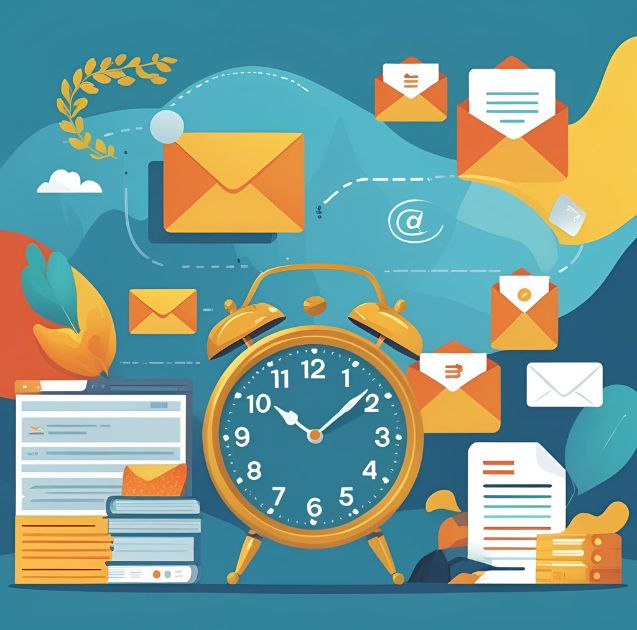
Start by analyzing your current email performance data to identify patterns in your audience’s behavior. Look for trends in open rates, click-through rates, and engagement across different days and times.
Set up A/B tests to compare different send times systematically. Begin with broad comparisons—morning versus evening, or weekday versus weekend—then narrow down to specific hours as you gather data.
Consider your audience’s lifestyle and professional schedules. A newsletter for working parents will have different optimal times than a B2B software announcement or a retail promotion.
Remember that optimal timing is just one piece of the email marketing puzzle. Great content, compelling subject lines, and proper list segmentation matter more than perfect timing. Use timing optimization as a way to enhance already strong campaigns, not as a substitute for quality content and strategy.
The best time to send your marketing emails is ultimately when your specific audience is most likely to engage. With systematic testing and careful analysis, you can discover those golden moments when your emails get the attention they deserve.


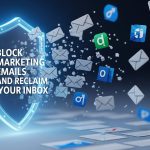
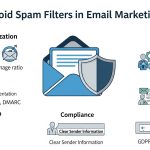


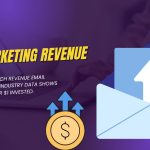
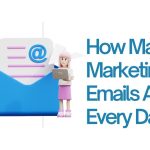







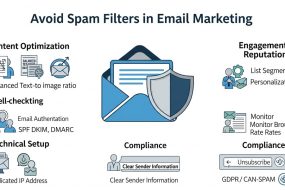
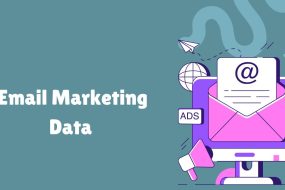
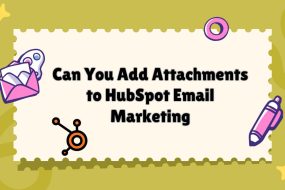
No Comments